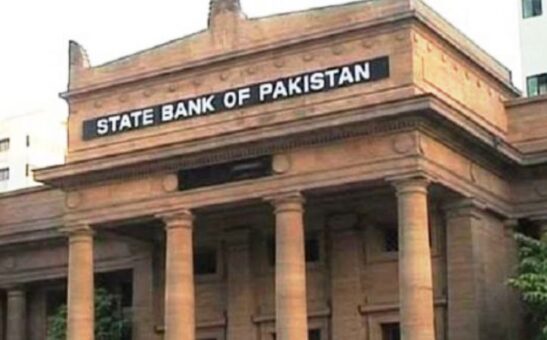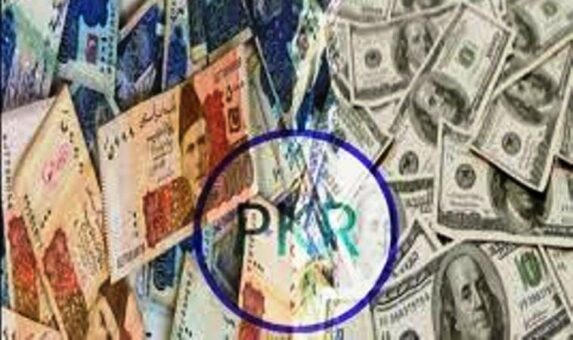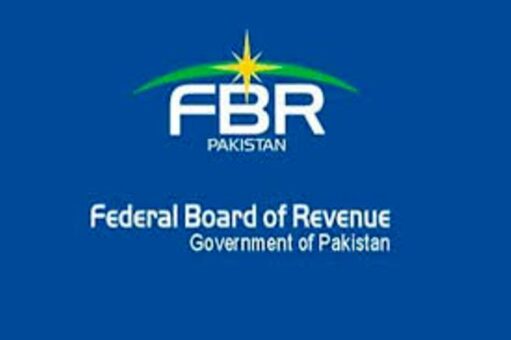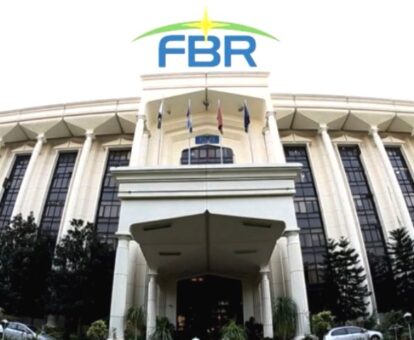Section 192 of the Income Tax Ordinance, 2001, as updated up to June 30, 2021, through the Finance Act, 2021, recommends a three-year jail term for individuals found guilty of making false statements before the Commissioner Inland Revenue (IR).
(more…)Author: Faisal Shahnawaz
-

KIBOR rates on September 20, 2021
KARACHI: State Bank of Pakistan (SBP) on Monday issued the following Karachi Interbank Offered Rates (KIBOR) on September 20, 2021.
Tenor BID OFFER 1 – Week 6.96 7.46 2 – Week 7.02 7.52 1 – Month 7.09 7.59 3 – Month 7.32 7.57 6 – Month 7.50 7.75 9 – Month 7.66 8.16 1 – Year 7.82 8.32 -

SBP announces first policy rate increase in 26 months
KARACHI: The State Bank of Pakistan (SBP) on Monday announced first increase in key policy rate by 25 basis points in past 25 months.
Previously, the SBP announced the increase in policy rate of 100 basis points to 13.25 per cent.
The SBP kept the policy rate unchanged at 13.25 per cent till March 17, 2020 when it decided to reduce the policy rate by 75 per cent to 12.50 per cent.
Due to coronavirus pandemic, the central bank brought down the policy rate to 7 per cent in short span of time and maintained at this level for the past many months. The SBP reduced the policy rate to 7 per cent in its announcement on June 25, 2020.
At its meeting on September 20, 2021, the Monetary Policy Committee (MPC) decided to raise the policy rate by 25 basis points to 7.25 percent.
Since its last meeting in July, the MPC noted that the pace of the economic recovery has exceeded expectations.
This robust recovery in domestic demand, coupled with higher international commodity prices, is leading to a strong pick-up in imports and a rise in the current account deficit.
While year-on-year inflation has declined since June, rising demand pressures together with higher imported inflation could begin to manifest in inflation readings later in the fiscal year.
With growing signs that the latest COVID wave in Pakistan remains contained, continued progress in vaccination, and overall deft management of the pandemic by the government, the economic recovery now appears less vulnerable to pandemic-related uncertainty.
As a result, at this more mature stage of the recovery, a greater emphasis is needed on ensuring the appropriate policy mix to protect the longevity of growth, keep inflation expectations anchored, and slow the growth in the current account deficit.
In line with this shift in the economic outlook, the MPC was of the view that the priority of monetary policy also needed to gradually pivot from catalyzing the recovery after the Covid shock toward sustaining it.
As foreshadowed in previous monetary policy statements, the MPC noted that this rebalancing would be best achieved by gradually tapering the significant monetary stimulus provided over the last 18 months.
The MPC noted that over the last few months the burden of adjusting to the rising current account deficit had fallen primarily on the exchange rate and it was appropriate for other adjustment tools, including interest rates, to also play their due role.
The MPC noted that the stance of monetary policy is still appropriately supportive of growth, with real interest rates remaining negative on a forward-looking basis. Looking ahead, in the absence of unforeseen circumstances, the MPC expects monetary policy to remain accommodative in the near term, with possible further gradual tapering of stimulus to achieve mildly positive real interest rates over time.
The pace of this possible further gradual tapering would be informed by updated information on the continued strength of demand growth and the stance of fiscal policy, amongst other factors.
In reaching its decision, the MPC considered key trends and prospects in the real, external and fiscal sectors, and the resulting outlook for monetary conditions and inflation.
With a supportiveFY22 budget and accommodative monetary policy, most high-frequency domestic demand indicators such as automobiles, POL (petroleum, oil and lubricants) sales, cement sales and electricity generation continue to depict robust growth. This growth is mirrored in the strength of imports and tax collections.
LSM registered strong growth in June (18.5 percent (y/y)) before moderating in August to 2.2 percent (y/y), in line with typical seasonal patterns. The services sector is also rebounding strongly; latest Google Community Mobility Reports show that activity across grocery stores, restaurants, and shopping centers during July and August rose above pre-Covid levels. In agriculture, the decline in the area under cultivation of cotton is expected to be compensated by an increase in area for rice, maize, and sugarcane. Based on these trends, growth in FY22 is now expected toward the upper end of the forecast range of 4-5 percent, notwithstanding some greater uncertainty with respect to spillovers from the evolving situation in Afghanistan.
The current account deficit rose to $0.8 billion in July and $1.5 billion in August, reflecting both vigorous domestic demand and high global commodity prices. While remittances remained strong, growing by 10.4 percent (y/y) during July-August and exports also performed reasonably well (averaging $2.3 billion per month), they were outstripped by imports. In response, the rupee depreciated by 4.1 percent since the last MPC meeting. The MPC noted that many other currencies have also depreciated recently as expectations of tapering by the Federal Reserve have been brought forward.
The MPC noted that the flexible market-based exchange rate regime has performed well since its introduction in June 2019, including through the Covid shock. It has overseen a healthy modulation of the current account and supported a critical build-up in the country’s gross and net FX reserves despite external pressures. Under this regime, the SBP does not suppress an underlying trend in the exchange rate and any interventions are limited to address disorderly market conditions. Since its floatation, the rupee has moved in an orderly manner in both directions and has depreciated by only 4.8 percent to date, much less than many other emerging market currencies over the same period. Since the rupee was floated, SBP’s gross foreign exchange reserves have nearly tripled to a record $20 billion, while net international reserves have risen by nearly $16 billion between end-June 2019 and end-August 2021.
The MPC observed that while the flexible exchange rate has appropriately played its role as a shock absorber, it is important that its role be complemented by strong exports, targeted measures to curb non-essential imports, and appropriate macroeconomic policy settings to contain import growth.
In FY21, prudent management of the public finances facilitated fiscal consolidation for the second year in a row despite Covid, with the primary deficit declining by around ½ percentage points to 1.4 percent of GDP. This improvement largely stemmed from strong growth in tax and petroleum development levy (PDL) revenues, together with significant deceleration in non-interest expenditures. Following the seasonal end-year release of expenditure allocations, the fiscal impulse was strongly expansionary in the final quarter of FY21. In the first two months of FY22, FBR revenue grew by over 40 percent (y/y)while Federal PSDP releases rose to an all-time high for this period, equivalent to nearly 44 percent of their budgeted amount for the full year. It will be important to support tax revenue growth and carefully monitor outturns through the year to ensure the budget remains on track. Any unforeseen slippages in the fiscal stance would further bolster domestic demand, imports and inflation.
The MPC noted that accommodative financial conditions have provided significant support to the growth recovery since the start of FY21. Following historic cuts in the policy rate and the introduction of SBP Covid-related support packages, private sector credit grew by more than 11 percent during FY21, on the back of consumer loans (mainly auto finance and personal loans) followed by a broad-based expansion in credit for fixed investment and finally working capital loans. The MPC felt that some macro prudential tightening of consumer finance may also be appropriate to moderate demand growth as part of the move toward gradually normalizing monetary conditions.
Inflation fell from 9.7 percent (y/y) in June to 8.4 percent in both July and August. In addition to favorable base effects, this decline reflects continued deceleration in administered prices of energy due to the reduction in PDL and sales tax on petroleum products. Core inflation also fell in both urban and rural areas in August. Nevertheless, the momentum of prices remains relatively elevated, with month-on-month increases of 1.3 percent in July and 0.6 percent in August. In addition, inflation expectations of both households and businesses have drifted up and wage growth has picked up as the recovery has strengthened.
Looking ahead, the inflation outlook largely depends on the path of domestic demand and administered prices, notably fuel and electricity, as well as global commodity prices. The MPC will continue to carefully monitor developments affecting medium-term prospects for inflation, financial stability and growth and stands ready to respond appropriately.
-

Asad Tahir appointed as official FBR spokesperson
The Federal Board of Revenue (FBR) has announced the appointment of Muhammad Asad Tahir, a seasoned BS-20 officer of the Inland Revenue Service (IRS), as the official spokesperson for the organization.
(more…) -

Dollar up by 53 paisas against PKR
KARACHI: The US dollar makes a gain against the Pak Rupee (PKR) rupee on Monday. The dollar retreated in the past two sessions during the last week.
The rupee fell by 53 paisas to close at Rs168.72 to the dollar from last Friday’s closing of Rs168.19 in the interbank foreign exchange market.
One of the reasons for dollar appreciation may be attributed to the first trading day after two weekly holidays. Further, the external payment kept dollar demand higher.
-

Prosecution for failure to comply with tax obligations
Section 191 of Income Tax Ordinance, 2001 explains the prosecution for non-compliance with certain statutory obligations.
(more…) -

SBP issues customers exchange rates for September 20
Karachi, September 20, 2021 – The State Bank of Pakistan (SBP) has issued the exchange rates for customers on Monday, September 20, 2021.
(more…) -

Digital tax payment to be must from November 1
ISLAMABAD: Federal Board of Revenue (FBR) has said digital payment for corporate taxpayers shall be must from November 01, 2021.
In a statement, the FBR said it is considering allowing the corporate taxpayers a grace period of 40 days to switch over to the digital mode of payments w.e.f. November 1, 2021 under Tax Laws (3rd Amendment) Ordinance, 2021.
This has been stated in a press release issued by FBR to clarify the relevant clauses of Tax Laws (3rd Amendment) Ordinance.
The Federal Board of Revenue vide the Tax Laws (3rd Amendment) Ordinance, 2021, (the New Ordinance) has introduced significant changes to the Income Tax ordinance, 2001 with a view to the documentation of the economy, capture the supply chains, and broaden the tax base.
The New Ordinance has restricted the scope of payments via traditional banking channels on account of expenditures exceeding Rs.250, 000/- to taxpayers other than companies.
Consequently, clause (la) in section 21 has been inserted in the Ordinance whereby it is now mandatory for companies to make payments on expenditures exceeding Rs.250, 000/- through digital mode only.
However, expenditures on account of utility bills, freight charges, travel fair, and payment of taxes and fines would continue to be admissible either paid in cash or traditional banking instruments.
The purpose behind this legislative enactment is to encourage digital payments and discourage traditional mode of transactions by the corporate sector in the first phase.
It is pertinent to mention that currently grey transactions (hiding/suppressing sales invoices and un-reconciled payments through open/revolving cheque or cash) are highly prevalent in business value chains. Almost 99% of all business transactions are on cash/cheque.
Moreover, 3rd party payments are highly prevalent in the organized and informal sector whereby businesses do not use their own bank accounts when making payments for supplies and tell their own customers/transaction-based informal-investors to make direct payments to the principle supplier.
This is highly prevalent in supply chains and has become an accepted norm. Likewise, cross cheques create financial inefficiency due to clearing period of 1-3 days.
Similarly, cross cheques/open cheques do not carry the “purpose” of the payment or its relationship with the invoice. Despite many attempts to increase documentation of supply chains such as WHT and Further tax, the number of unregistered distributors and retailers remains high whereby sales are suppressed and due income tax is completely avoided.
However, owing to lack of digital readiness by some corporate taxpayers immediately, FBR is considering to allow the corporate taxpayers a grace period of 40 days to switch over to the digital mode of payments w.e.f. November 1, 2021. In the intervening period they may use the traditional banking transaction methods including cross cheques, cross bank drafts, cross pay orders, or any other crossed banking instrument showing transfer of amount from the business bank account of the taxpayer in addition to digital mode of payment as long as those are compliant with the law.
In the meantime, FBR is also engaging the State Bank of Pakistan (SBP) to issue necessary instructions to operationalize this important provision of law as well as encourage the banking sector to facilitate the corporate businesses to accomplish digitization within the stipulated timeframe.
-

SBP relaxes conditions for Afghan Transit Trade
KARACHI: State Bank of Pakistan (SBP) on Monday relaxed conditions of the Foreign Exchange Manual to facilitate Afghan Transit Trade in the wake of prevailing conditions in the neighboring country.
The central bank issued a circular to relax the conditions.
The SBP through Foreign Exchange Circular No. 07 dated August 05, 2021 in terms of which SBP notified revision of Chapter 14 of Foreign Exchange Manual.
“Based on representations received from various stakeholders and to facilitate Afghan Transit Trade in current circumstances, it has been decided to defer the following requirements until March 31, 2022:
“Submission of proceed realization certificate for freight and container detention charges in respect of consignment of Afghan Transit Trade as mentioned in Para 4((i(n)) & 4A((ii(g)), Chapter 14 of Foreign Exchange Manual.
“Maintaining separate PKR account by shipping companies/agents for accepting container detention charges as mentioned in Para 4A(i), Chapter 14 of Foreign Exchange Manual.”
The banks have been advised to bring the above developments to the notice of all their constituents for meticulous compliance.
-

Penalty up to Rs3 million for failure to integrate business
ISLAMABAD: The Federal Board of Revenue (FBR) may impose up to Rs3 million as a monetary penalty upon persons for failure to integrate their businesses with the online system under Sales Tax Act, 1990.
An important amendment has been made through Tax Laws (Third Amendment) Ordinance, 2021, which was promulgated on September 15, 2021 through a presidential order.
Serial No. 25A has been added to Section 33 of the Sales Tax Act, 1990 to prescribe penalty for non-integration of businesses under the sales tax regime.
Text of the newly added Serial No. 25A of the Section 33 is:
25A. A person required to integrate his business as stipulated under sub-section (9A) of section 3, who fails to get himself registered under the Sales Tax Act,1990 and if registered, fails to integrate in the manner as required under the law and rules made thereunder.
Such person shall be liable to pay
(i) penalty of five hundred thousand rupees for first default;
(ii) penalty of one million rupees for second default after fifteen days of order for first default;
(iii) penalty of two million rupees for third default after fifteen days of order for second default;
(iv) penalty of three million rupees for fourth default after fifteen days of order for third default:
Provided that if such person fails to integrate his business within fifteen days of imposition of penalty for fourth default, his business premises shall be sealed till such time he integrates his business in the manner as stipulated under sub-section (9A) of section 3:
Provided further that if the retailer integrates his business with the Board [FBR]’s computerized system before imposition of penalty for second default, penalty for first default shall be waived by the Commissioner.”
The condition of making mandatory the integration of businesses has been introduced through sub-section 9A of the Section 3 of Sales Tax Act, 1990.
Text of the sub-section 9A of Section 3 is:
“(9A) Notwithstanding anything contained in this Act, Tier-1 retailers shall pay sales tax at the rate as applicable to the goods sold under relevant provisions of this Act or a notification issued thereunder:
Provided further that from such date, and in such mode and manner, as prescribed by the Board, all Tier-1 retailers shall integrate their retail outlets with Board’s computerized system for real-time reporting of sales.”